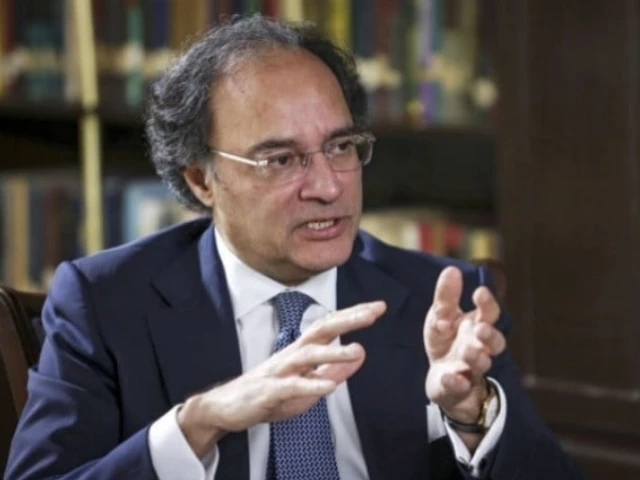Business
Chipotle cuts same-store sales forecast for third straight quarter as diner visits drop again

A customer carries a Chipotle bag in San Francisco, California, US, on Friday, Jan. 31, 2025.
David Paul Morris | Bloomberg | Getty Images
Chipotle Mexican Grill on Wednesday reported quarterly revenue that fell short of expectations and cut its same-store sales forecast for the third straight quarter.
Chipotle is expecting its full-year same-store sales to shrink by a low-single digit percentage in fiscal 2025. That’s a big change from February, when the burrito chain was projecting same-store sales would grow by a low- to mid-single digit percentage.
CEO Scott Boatwright said the company is seeing “consistent macroeconomic pressures.” Traffic fell by 0.8%, the third straight quarter of declines.
After the chain outperformed the broader restaurant industry in 2024, the sluggish consumer environment finally hit its restaurants this year. Chipotle’s customer base skews higher income, so it was insulated from the pullback in spending from low-income consumers that fast-food chains were reporting last year.
Here’s what the company reported compared with what Wall Street was expecting, based on a survey of analysts by LSEG:
- Earnings per share: 29 cents adjusted, in line with expectations
- Revenue: $3 billion vs. $3.03 billion expected
Shares of the restaurant chain ticked slightly higher in extended trading.
Chipotle reported third-quarter net income of $382.1 million, or 29 cents per share, down from $387.4 million, or 28 cents per share, a year earlier.
Excluding slight adjustments for stock-based compensation grants and other items, the burrito chain still earned 29 cents per share.
Net sales rose 7.5% to $3 billion, fueled by new restaurants. The company opened 84 company-operated locations and two licensed international stores.
Chipotle’s same-store sales increased 0.3% in a reversal from last quarter’s decline. But the growth in sales at restaurants open at least a year came from a 1.1% bump in average check, as traffic dipped.
To revive traffic growth, Chipotle is focusing on its in-restaurant execution, marketing, digital experience and menu innovation, according to Boatwright.
Looking to 2026, Chipotle anticipates that it will open 350 to 370 new locations. That target includes 10 to 15 international restaurants operated by partners, as the company aims to expand globally.
Last month, Chipotle announced a joint venture with SPC Group, a Korea-based restaurant operator. It has also signed development deals with operators in the Middle East and Latin America.
Business
Frontier Airlines replaces CEO Barry Biffle with carrier’s president

Barry Biffle, president and chief executive officer Frontier Airlines, prior to a Senate Judiciary Subcommittee on Antitrust, Competition Policy, and Consumer Rights hearing in Washington, DC, US, on Tuesday, Sept. 30, 2025.
Kent Nishimura | Bloomberg | Getty Images
Frontier Group Holdings, the parent company of budget airline Frontier, replaced its nearly decade-long CEO, Barry Biffle, with the carrier’s president, the company said Monday.
James Dempsey is taking over as interim CEO effective immediately.
“Jimmy has been an invaluable member of Frontier’s senior leadership team for more than 10 years and has played an instrumental role in the company’s evolution and growth during that time,” Board Chair Bill Franke said in a news release. “We believe Jimmy is uniquely qualified to guide our airline into the future.”
Biffle and Frontier declined to comment. Frontier said Biffle would stay on in an “advisory capacity” until the end of the year.
Biffle had been Frontier’s chief executive since March 2016 and has a more than three-decade career in airlines, including at the country’s longtime top budget carrier, Spirit, which is currently in its second bankruptcy in less than a year.
Frontier lost $190 million in the first nine months of the year, compared with net income of $31 million a year earlier.
Frontier had been in talks to merge with Spirit several times since early 2022, but none have solidified thus far.
Smaller budget airlines like Frontier have struggled to produce steady profits in the wake of the pandemic, as higher labor and other costs, as well as consumer tastes shifting to international travel and higher-end seats, and an oversupply of domestic capacity, hurt financial results.
Biffle led some of Frontier’s initiatives in recent months to cater to customers seeking more space on board.
Frontier’s shares are down nearly 19% so far this year, while the NYSE Arca Airline Index, which tracks mostly U.S. airlines, is up more than 6%.
Business
RBI Holds 879.6 Tonnes Of Gold As Prices Surge Amid Global Uncertainty

New Delhi: The Reserve Bank of India, as on March 31 this year, held 879.58 metric tonnes of gold as compared to 822.10 metric tonnes as on March 31, 2024, reflecting an increase of 57.48 metric tonnes, the Parliament was informed on Monday.
These gold holdings contribute to strengthening confidence in the Indian rupee and the overall external stability of the economy, Minister of State for Finance Pankaj Chaudhary told the Lok Sabha in a reply to a question.
To questions about the surge in gold and silver prices in the domestic market, he said that domestic prices of precious metals like gold and silver are primarily determined by their prevailing international prices (in US dollar terms), the exchange rate of the Indian rupee against the US dollar and applicable tariffs.
The recent surge in prices is largely attributable to heightened geopolitical tensions and uncertainty over global growth, which have boosted safe-haven demand, including substantial gold purchases by central banks and major institutions worldwide.
The minister said that the recent rally in gold prices may have differential effects across states or population groups, depending upon the degree of socio-cultural and economic reliance on these precious metals.
“They serve a dual role — not only as a consumption item but also as an investment avenue, as they are considered safe assets for hedging against uncertainties,” he said.
Thus, an increase in the price of gold or silver positively influences household wealth, as the notional value of existing gold or silver holdings appreciates, he added. Chaudhary further stated that the prices of precious metals are determined by the market, and the government is not involved in the price fixation.
However, the government, as a relief measure for consumers, lowered customs duty on gold imports from 15 to 6 per cent in July 2024.
The government introduced measures such as the Gold Monetisation Scheme (GMS), Gold exchange‑traded funds (ETFs) and Sovereign Gold Bond Scheme to reduce the demand for physical gold and to mobilise idle domestic gold, so that part of the demand is met from local stocks rather than fresh imports, thereby reducing external vulnerability and price pressures.
“The RBI and government regulation of bullion imports through nominated agencies, banks and refineries improve traceability, reduce grey‑market channels and help domestic prices more smoothly track global benchmarks rather than react to shortages or speculative spikes,” the minister said.
Business
Mercosur hurdle: French objections and farm protests freeze EU trade deal; Brussels faces credibility test – The Times of India

France’s last-minute opposition and mounting farmer protests are threatening to derail the European Union’s long-delayed free-trade agreement with South America’s Mercosur bloc, raising fresh doubts over whether the pact can be signed this year, AP reported.Angry European farmers, fearing cheaper agricultural imports and tougher competition, have taken to the streets in Brussels just as EU negotiators were hoping to close a deal that has taken nearly 25 years to negotiate. The agreement involves the 27-country EU and five Mercosur nations — Brazil, Argentina, Uruguay, Paraguay and Bolivia — and would gradually remove duties on most goods traded between the two blocs over 15 years.The accord, agreed in principle a year ago, still needs approval from all EU member states and the European Parliament. EU officials had planned for European Commission President Ursula von der Leyen and European Council President António Costa to sign the deal in Brazil on December 20, but growing resistance now threatens that timeline.French Prime Minister Sébastien Lecornu said on Sunday that the current deal was “unacceptable” and that the “conditions have not been met” for EU leaders to authorise its signing this week, effectively seeking a delay that could push the decision to 2026 or later. While acknowledging steps taken by the European Commission to protect farmers and tighten food safety checks, Lecornu said France remained unconvinced.Poland, Austria, the Netherlands and France fear Mercosur exporters could undercut EU farmers who operate under stricter labour, environmental and sanitary rules, including pesticide restrictions, analysts told AP. France has been pressing for “mirror clauses” that would require Mercosur producers to meet the same standards — demands that have not been fully accepted.Alicia Gracia-Herrero, a senior fellow at the Brussels-based Bruegel Institute, said the standoff exposed limits to the EU’s political unity and global influence. “If we cannot get this done even with (US President Donald) Trump’s pressure, what can you expect from the EU?” she said, warning that further delays could undermine Brussels’ credibility in talks with partners such as Indonesia and India.The deal comes at a sensitive time for the EU, which has been seeking to diversify trade ties after Trump imposed tariffs of 15% on most EU imports earlier this year, AP reported. Brussels sees the Mercosur pact as a strategic counterweight to aggressive trade tactics by both the US and China.European Commission spokesperson Olof Gill said the bloc is pushing to conclude the agreement by year-end, arguing it would strengthen the EU’s geopolitical standing. “We’re talking about bringing together two of the world’s biggest trading blocs,” he said, citing cooperation on climate, economic security and reform of the global rules-based order.Agriculture remains central to the dispute. The EU exported 235.4 billion euros ($272 billion) worth of agricultural goods in 2024, and critics warn the deal could hurt local dairy and beef producers and cause environmental damage. Supporters counter that it would save businesses about $4.26 billion in duties annually and open markets for products ranging from French wine to German pharmaceuticals and Brazilian minerals.To calm opposition, the European Commission has proposed safeguards, including mechanisms allowing farmers to trigger investigations if Mercosur imports are priced at least 10% below EU products, tighter border inspections for banned pesticides, and reforms to distribute agricultural subsidies more equitably.These measures, however, have failed to ease French concerns or quell farmer anger. Agricultural unions are again planning demonstrations in Brussels as EU leaders meet later this week, underlining the political risks surrounding a deal that was once seen as a cornerstone of the bloc’s trade strategy.
-

 Politics1 week ago
Politics1 week agoThailand launches air strikes against Cambodian military: army
-

 Fashion1 week ago
Fashion1 week agoGermany’s LuxExperience appoints Francis Belin as new CEO of Mytheresa
-

 Politics1 week ago
Politics1 week agoZelenskiy says Ukraine’s peace talks with US constructive but not easy
-

 Politics5 days ago
Politics5 days agoTrump launches gold card programme for expedited visas with a $1m price tag
-

 Tech6 days ago
Tech6 days agoJennifer Lewis ScD ’91: “Can we make tissues that are made from you, for you?”
-

 Business5 days ago
Business5 days agoRivian turns to AI, autonomy to woo investors as EV sales stall
-

 Entertainment1 week ago
Entertainment1 week agoToo big to fail? IndiGo crisis exposes risks in Indian aviation
-

 Sports5 days ago
Sports5 days agoPolice detain Michigan head football coach Sherrone Moore after firing, salacious details emerge: report










